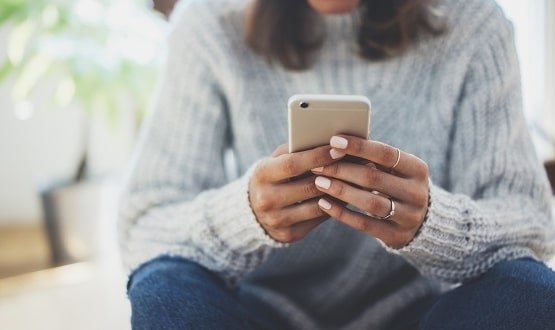Looking to a health e-future
- 2 January 2012

What did you get the health conscious person in your life for Christmas? A monitor to feed information about their exercise levels or blood pressure into an online portal?
These have become increasingly common (and particularly popular with a certain kind of chart-obsessed executive). But researchers are working on far more futuristic ideas – from smart clothes to avatars that can support rehab patients.
Connected devices
This year, there has been a lot of promotion for blood pressure monitors that can be connected to mobile devices – such as the monitor from company Withings that can be used with the iPhone, iPod Touch or iPad.
Users can see the results over time, load the information onto a personal health record such as Microsoft HealthVault, or email it to their GP.
The same company has developed a set of bathroom scales that measure weight, fat mass and lean mass – and automatically send the data to a mobile device via a wireless internet connection, so it can be accessed from an online health portal.
More specifically, the Nike+ device and online tracker, with an avatar-type trainer, has been around for a few years now – and continues to be popular with running addicts.
However, a UK company has taken the idea a bit further. Ki Performance has developed the Ki Fit device which goes beyond simply tracing steps or blood pressure. It aims to monitor the user’s entire ‘metabolic profile’.
Using a multi-sensory device, which users wear during the course of their day, including when they’re asleep, it calculates their caloric burn through indicators such as temperature and blood pressure.
It’s not cheap though – purchasing the armband and a year’s subscription to the online health portal will cost £268.
The UP wristband from Jawbone is in the same vein, but appropriate for the more fashion-conscious. As with the Ki Fit, it is designed to be worn 24-hours a day, seven days a week.
The band can tell when the user is walking and approximately how fast, how long they have been sleeping.
It is supposed to sync with mobile applications to combine food intake information which the user inputs into an app; although there are reports that the device has an unacceptably high failure-rate.
Smart clothes
Mobile health technology company Zephyr is responsible for developing a device which provides a similar sort of function, but in a much more unobtrusive way.
The BioHarness has been used with smart fabric technology so people can simply wear a shirt with the sensors embedded which will record their ECG, heart rate, breathing rate and skin temperature and then transmit it to a mobile device and internet portals via Bluetooth.
The technology has been used in the US as part of the week-long NFL Scouting Combine showcase, in which players wear the shirts and the data is captured for the benefit of scouting coaches.
However, the technology could soon become available to the general public. US telecommunications company AT&T’s announced earlier this year that it will be providing the wireless access.
The company’s president of emerging devices, Glenn Lurie, said the partnership could enable information to be pushed through to electronic health records.
“Today, smartphones capture Zephyr’s biodata and send it to the cloud for analysis, presentation and health record purposes.
"By embedding wireless into the bioharness, we’re arming healthcare professionals with the technology needed to access timely data in ways not previously possible.”
Research being led by the University of Wales has also been working with ‘smart fabric’ to develop health-related monitoring – in this case for the elderly.
The three year initiative intends to create technology which can ‘enhance the autonomy and independence’ of those aged 60-75.
This will include embedding a sensor into clothing which will monitor various physical and physiological measurements and will communicate the information to a computer or Bluetooth enabled smartphone.
The researchers are currently developing an algorithm which will accurately determine the wearer’s step count and total activity.
However, they are also evaluating the possibility of incorporating fibertronic technology, which will include textile-based switches and keypads.
Avatars and texting underpants
Meanwhile, an Irish-based company is making good ground getting its mobile sensors out into the healthcare market.
Shimmer Research took over commercialisation of the wireless sensor which originally came from Intel, and has just announced a ‘soft-launch’ of one of its products to the Spanish market.
The overall package, including two Shimmer wireless sensors, a touchscreen computer and internet dongles are intended for patients needing physiotherapy after knee surgery.
Vice President of business development Kieran Daly explains: “what they do is when they leave the hospital they take a kit which has all the equipment.
They pop the device on either side of their knee and an on-screen avatar runs through a series of physiotherapy exercises that their clinician has described.”
Daly says the avatar shows whether they are doing the exercises correctly by using the movement information collected by the Shimmer sensors, and the information and outcome of their sessions is then sent to the patient’s clinician.
He says it has been extremely successful in Spain, whether it was trialled, because it makes the rehabilitation process much easier.
“It’s much better for the patient, who has probably got restricted movement, because then they don’t have to make their way into the hospital every day.”
The device could be brought to the UK market next year. Another invention, which is still in prototype stage, is a pair of underpants for incontinence sufferers that warn if they are about to leak.
It’s hoped these devices will be able to sense when a wearer is getting close to having an accident, by either smell or liquid testing, and send an alert to a connected device. This device could be a ring that changes colour, or a mobile phone.
The ‘extended human’
They may seem futuristic, but these health devices may be in stores sooner than we anticipate.
International ‘innovation’ consultants Fjord have big plans for the future of mobile health technology, which include dreams about the creation of a microchip in people’s teeth to keep track of what they are eating.
Spanish managing director Andy Goodman describes this as ‘designing the extended human’.
He says the chip could alert the person if they’re being unhealthy, create a detailed picture of eating habits, and send the information to the dentist.
The idea is part of Goodman’s thinking that society is approaching the stage where it can vastly accelerate evolution.
“Technology provides us with an armature to create the next evolutionary step. We are about to break nature’s grip and control the future of our species.”
While the innovative proposals hold exciting potential for mobile health, perhaps the development of a microchip to monitor food intake can be delayed slightly; at least until after those New Year parties.




